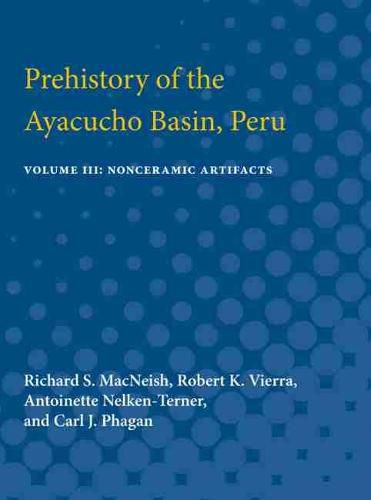Readings Newsletter
Become a Readings Member to make your shopping experience even easier.
Sign in or sign up for free!
You’re not far away from qualifying for FREE standard shipping within Australia
You’ve qualified for FREE standard shipping within Australia
The cart is loading…






Nonceramic Artifacts is the first of a series of major publications devoted to the archaeology of South America. Richard S. MacNeish has assembled an excellent staff of cooperating scientists for the excavation and interdisciplinary analysis of the Ayacucho Basin, a pristine nuclear site and a region containing the major archaeological, geographical, and ecological units of highland Peru. Supported by the National Science Foundation, MacNeish and his colleagues, in addition to their excavation, collected historical and prehistoric specimens and records documenting the geological, botanical, zoological, and other aspects of the Basin from the past 25,000 years. Future volumes will provide discussions on changes in the prehistorical environment, excavation techniques and methodology for establishing chronology, changes in ceramics and architecture, statistical-computer techniques used in determining ancient human behavior and reconstructing ancient cultural systems and subsystems, and changes in population and settlement patterns and energy flow.
$9.00 standard shipping within Australia
FREE standard shipping within Australia for orders over $100.00
Express & International shipping calculated at checkout
Nonceramic Artifacts is the first of a series of major publications devoted to the archaeology of South America. Richard S. MacNeish has assembled an excellent staff of cooperating scientists for the excavation and interdisciplinary analysis of the Ayacucho Basin, a pristine nuclear site and a region containing the major archaeological, geographical, and ecological units of highland Peru. Supported by the National Science Foundation, MacNeish and his colleagues, in addition to their excavation, collected historical and prehistoric specimens and records documenting the geological, botanical, zoological, and other aspects of the Basin from the past 25,000 years. Future volumes will provide discussions on changes in the prehistorical environment, excavation techniques and methodology for establishing chronology, changes in ceramics and architecture, statistical-computer techniques used in determining ancient human behavior and reconstructing ancient cultural systems and subsystems, and changes in population and settlement patterns and energy flow.